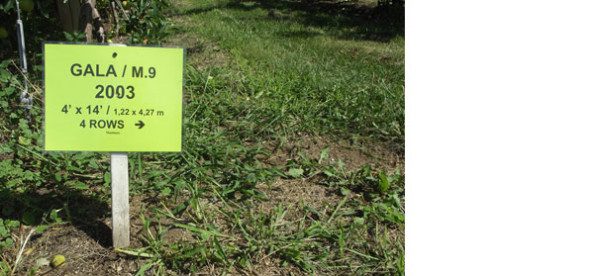

Sep 4, 2012High-density not a cure-all for Quebec orchard
When Dean Thomson was 25, he just knew high-density apple plantings were the way to go.
“Twenty-five is the best age, because you know everything,” he said. “I was tying branches down, sideways, up – making every branch go where it was supposed to go. It looked really impressive.”
Over the next two decades, however, Thomson realized that his approach might be a little too straightforward. When he looked at his high-density blocks with a more experienced eye, he saw that they often weren’t yielding much more than conventional blocks. Sure, they looked good, but were they worth the extra expense?
“I started to do more homework as far as where our labor was going,” Thomson said.
He learned that high-density systems aren’t always the most profitable approach.
“At age 45, it’s a drag, because you start to realize you know nothing.”
Thomson shared his thoughts with visitors from the International Fruit Tree Association during the group’s summer tour of apple orchards in Quebec, Canada. Thomson is a fourth-generation apple grower, a member of the family that runs Thomson Orchards in Saint-Paul-d’Abbotsford, Quebec.
Thomson’s great-grandfather first bought an orchard in the area in 1919. The family bought or rented more and more land over the ensuing decades, and now manages about 375 acres of apple orchards on nine different sites (varieties include Paula Red, Cortland and Gala). They expect to produce between 275,000 and 300,000 bushels of apples this season, according to Thomson.
Thomson’s father started getting into high-density systems more than four decades ago. Their first high-density apple planting, 6 feet by 15 feet, was planted in 1968. Intensive plantings – on M.26, M.7 and M.106, for example – continued into the 1990s, when Thomson took over orchard duties.
His family counted on local labor for years, but that changed about a decade ago. They started hiring workers from Guatemala, Mexico and Grenada, workers who could handle the rigors of farming. The workers stay in rental houses in the nearby village (Thomson is the mayor of Saint-Paul-d’Abbotsford), and have become an important part of the community, he said.
When you’re growing on nine sites, communication can be difficult. Cell phones are a must, he said.
“The way we operate would be almost impossible without them.”
So, what does Thomson think of high-density systems these days?
It depends. Using Cortlands as an example, he said his high-density trees yield between 900 and 1,400 bushels of that variety per acre, with a quality rate of 85 percent. His medium-density semi-dwarf trees, however, yield between 1,200 and 2,000 bushels of Cortlands per acre, with a quality rate of about 75 percent. The volume is significantly greater from his semi-dwarf trees, and even though the quality is lower, there’s a good market for processing Cortlands. He can still make a decent amount of money from them, he said.
On the other hand, his Galas do better in high-density systems.
“Planting systems must be evaluated and re-evaluated as our technology, labor availability and markets change,” Thomson said. “We’re never going to know everything in apple growing, because everything is always changing.”
By Matt Milkovich, Managing Editor














